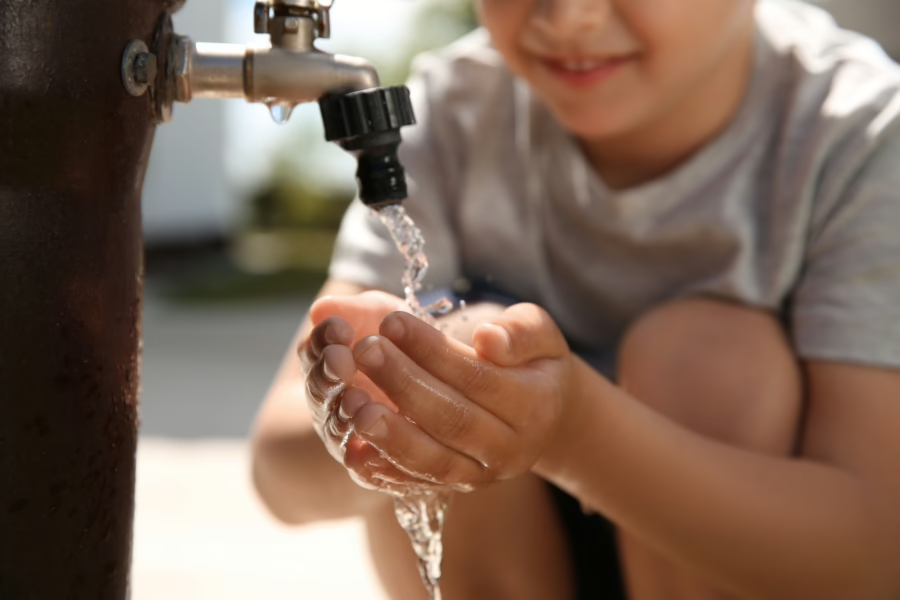At the US Water Alliance, we believe that the key to securing a sustainable water future for all relies on an integrated and inclusive approach to managing our water infrastructure and resources. We refer to this paradigm shift as a One Water approach. And we’ve seen how integrating arts and culture can help us reach those goals. The new report, Farther, Faster, Together: How Arts and Culture Can Accelerate Environmental Progress, released by ArtPlace America on Wednesday, demonstrates the tremendous opportunity to drive new solutions and positive change in the water sector.
When I worked at the San Francisco Public Utilities Commission (SFPUC), I first learned about the city’s 2%-for-art initiative, which allocates two percent of the cost of public works and infrastructure projects for art in new public and civic spaces. Given the significant infrastructure investments the SFPUC was undertaking, we saw firsthand how the arts and creative placemaking could be incorporated into our work at the utility. Through collaboration with the San Francisco Arts Commission, local artists, and residents, the SFPUC has been able to channel both arts and community benefits investments from capital projects to shape the character and identity of the neighborhoods in which they work.
At the US Water Alliance, which is comprised of members ranging from public water utilities to private companies to nonprofit organizations, I have been so impressed with and inspired by how other utilities are using arts and cultural strategies to conduct participatory planning, educate residents, visualize our water systems, and transform communities:
- As Northeast Ohio Regional Sewer District embarks on their 25-year plan to reduce pollution in Lake Erie through Project Clean Lake, the agency has partnered with LAND Studios and local public and literary artists to incorporate neighborhood-significant art significant into their green infrastructure projects.
- In 2015, when the Metropolitan Water Reclamation District of Greater Chicago opened the world’s largest wastewater treatment and nutrient recovery facility at Stickney Water Reclamation Plant, the agency worked with local artists to make the technology and innovations come alive and demonstrate the benefits to the public. This is just one of their many partnerships with local artists.
- In partnership with the Philadelphia Mural Arts, Philadelphia Water is incorporating the arts into its nationally-acclaimed stormwater management program. WaterWays, one of the largest installations created as part of this partnership, highlights both the area’s industrial history and wildlife as well as Philadelphia Water’s groundbreaking stormwater innovations on Venice Island.
These exciting examples are catalysts for changing the way we view, value, and manage water. After participating in the ArtPlace America working group on art and the environment last year, we were compelled by the research underway and inspired to bring creative placemaking approaches to US Water Alliance members.
Through a new partnership with ArtPlace America, we will demonstrate the ways in which arts and cultural strategies can help achieve One Water goals by cataloguing the excellent work already being done. In sharing best practices and success stories, we hope to drive progress by inspiring a more widespread adoption of arts and cultural strategies in the water sector.
Together with ArtPlace and with the guidance of a 21-member advisory group of arts, culture, water, and conservation leaders, the Alliance will develop an action-oriented blueprint for integrating arts and culture into water management. In-depth case studies will demonstrate how the creative approaches have resulted in improved water management outcomes or put stakeholders on the path to positive results.
For the US Water Alliance, however, this project represents more than a document to publish. The blueprint will serve as a guide for water leaders to learn about the successes and challenges of creative placemaking approaches, but we also plan to facilitate deeper exchanges and field building opportunities between water, arts, and cultural leaders.
The first place we will foster this dialogue is at the One Water Summit 2018 in the Twin Cities from July 10-12, 2018, where we plan to release the blueprint document and host a tactical workshop on how to move from theory to action. We are also working local artists from Water Bar + Public Studio to identify ways that art and culture can be incorporated throughout the rest of the summit.
As we work to advance One Water management in communities across the nation, the US Water Alliance is committed to demonstrating the principles of One Water through our work: demonstrated value, multiple benefits, integrated approach, bold thinking and action, and partnerships for progress. We believe arts and culture is a critical resource in helping us do this.


